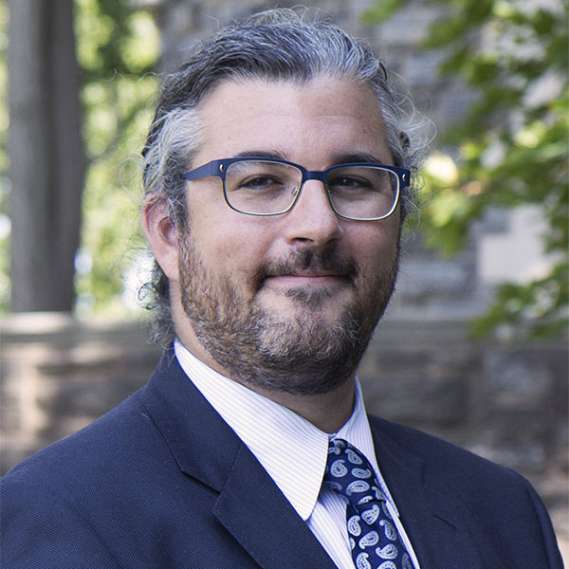

By: Marc Brasof and Joseph Levitan, editors, Student Voice Research: Theory, Methods, and Innovations From the Field
Marc Brasof is an associate professor of education, director of secondary social studies and English education, and the Rosemary and Walter Blankley Endowed Chair in Education at Arcadia University.
Joseph Levitan is an assistant professor in the Department of Integrated Studies in Education at McGill University.
In our last blog, we discussed how the work of student voice research needs to be informed by the principles of intersubjectivity, reflexivity, power dynamics, and context in order to increase the quality of educational research. The premise here is that educational change work and research need the insights (and at times, leadership) of students to produce the kinds of knowledge necessary to move classrooms, schools and communities to become more just, equitable, and responsive. Here, we want to illustrate how student voice methods can achieve such aims, with a particular focus on the hidden or overt contextual sensitivities that can shape voice and ultimately research projects.
What are contextual sensitivities in student voice research, and why does it matter?
Researchers need to choose research methods that are responsive to the students’ and the study’s contexts. Such choices need to reduce any barriers that might inhibit the students from telling their own stories. Often, the methods/strategies to facilitate such conversation are in forms preferred by researchers and adults and in ways that do not account enough for the power dynamics inherent in the expert-layman relationship between researcher and subject and the place of conversation, to name one dynamic. In our recently released book, Student Voice Research: Theory, Methods, and Innovations from the Field, student voice researcher Eve Mayes argues, “[t]he student voice encounter is not a neutral zone. It is a zone where neither young people and adults, nor young people themselves, can ever be unproblematically ‘equal.’’ (p. 61) In other words, how do researchers create spaces and strategies that get best at what youth are thinking about in terms of the schools? As researchers, how can we trust what they say to us is what they mean?
This means aligning research methods with the cultures, experiences, perspectives, and knowledge that the research project is trying to gather and understand. There are dozens of methodologies available to student voice researchers. So, selecting a method is an important choice for quality student voice research.
How can student voice researchers choose the right methods for their contexts?
Centering research methods on good ways to understand youth will be based on the relationships a researcher has with the individuals in a research space, as well as the history, current situation, issues or questions to be addressed, and institutional norms at the sites of study. As student voice researchers advance quite often, students leading their own projects, with the researcher as a facilitator, can be emancipatory, the process can create an open and trusting relational dynamic with educators/researchers where students are able to assert themselves and explore topics that are important to them.
What are some excellent examples from our book and how does each live up to the principle? The mission of Student Voice Research was to support the field by surfacing and illustrating core principles that guided what we saw as quality research. Our collaborators are experts in the field who share their experiences with a number of methods and how they choose and adapt their methods to the contexts where they work.
Power and Yarn
In research conducted in primary and secondary Australian schools, Dr. Eve Mayes’ methods included the use of material objects to uncover the social and power dynamics of doing student voice work. For Mayes, and many student voice researchers, such examinations are about understanding and shifting power dynamics inherent in school settings more broadly and interpersonally and having those involved in the process of change realize such relationships matter and are impactful to the work. Mayes found that students often self-police what they say and how depending on who is asking, where they are, and who they are with. One important population here besides educators, were peers. Students do not express voice monolithically, and privilege and inequality, which is baked into the schooling experience, can silence less powerful peers. In this way, Mayes explains in her chapter about the use of material objects to enhance listening in research, “[p]ower can be vaguely sensed, enacted and reproduced by habit, felt in its subtle effects but elusive to explain.” (p. 164) A ball of yarn was used in Mayes’ research methods to facilitate a reflective experience among 20 student leaders to surface the inner voices of students and exchange of ideas through interpersonal dialogue. While standing in a circle, students were asked to respond to a prompt about what stood out for them after being engaged in four years of youth-adult research and collaborations around school reform. As the ball of yarn was unraveled as it was passed from speaker to speaker, creating a record of who speaks and when, nodes emerged that began to uncover the flow of conversation and whose voices were most prominent. Eventually, students began to see this dynamic play out and intervened to support a more inclusive, multi-directional movement of yarn. Though this is just one of Mayes’ observations laid out in her chapter, it is illustrative of how the use of materials can support another way of seeing, hearing, and feeling the invisible and visible between and among people. And, the activity enabled participants to identify the power dynamics that played out not only in the circle but perhaps present in their collective work.
Photo-cued Interviews
The ubiquity of social media and cameras means that young people regularly express themselves visually. In response, Dr. Kayla Johnson has developed an interview protocol that utilizes students’ familiarity with photography to engage in student voice research. This method is contextually sensitive, because it leverages students’ prior knowledge of technology and cultural experiences to support narrative construction of their lived experiences. In this way, photo-cued interviews is a method that considers power dynamics by creating a more equitable approach to data collection enabling students to be more reflexive, which builds intersubjectivity (see previous blog).
In chapter seven of Student Voice Research, Johnson highlights how being sensitive to students’ contexts and providing ways for students to express themselves through photos allows for deeper meaning-making and planning for educational change. Through photo-cued interviews some students are able to have more control in the ways and what they communicate by reflecting upon their experiences using the photos that they decided to capture as a prompt. Upon being interviewed about their photo choices, the researcher is creating more opportunities for students to shape the direction of the discussion in interviews. Johnson highlights how this method allows for more contextual sensitivity via a project with rural, first-generation Indigenous students in Peru. She demonstrates how using photos as a prompt provides avenues for discussing emotions, thoughts, and experiences in ways that allow for students to direct the conversation more towards their lived experiences about rural-urban differences. In this study, that reflection allows students to dialogically offer evidence-based suggestions for changes to policy and practice. Giving students the opportunity to take photos prior to an interview session meets students’ contexts for self expression and using the Student Voice Research Framework to ensure each step thoughtfully shifts power dynamics and is reflexive allows for better intersubjective understanding to create positive educational change.
In sum, methods matter. The contexts in which research is conducted—who it is with, where it is carried out, the social dynamics at play, and how it happens—must be part of the design of research projects. These kinds of considerations matter for all research, but with student voice research, because of inherent imbalances in power and position in society, researchers working with youth need specific principles to apply in their context. In this way, students’ cultures helps to drive the methods as researchers seek to understand their worlds. These two examples are important illustrations of how research with youth requires its own set of principles to ensure inquiries are relevant and produce trustworthy knowledge, as well as how to put the principles in practice.
Photo by Fox via Pexels
